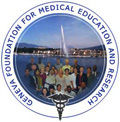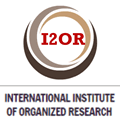Parto fisiológico en pacientes con cesárea previa
Palabras clave:
cesárea repetida, complicaciones intraoperatorias, complicaciones postoperatoriasResumen
Se realizó un estudio descriptivo transversal en la Maternidad del Hospital Central de Windhoek en el período comprendido desde enero a diciembre de 2008. El universo de estudio estuvo constituido por 528 pacientes cesareadas que fueron atendidas durante el año correspondiente con el objetivo de reducir el número de cesáreas que se realizan. Se revisaron las historias clínicas para obtener la información necesaria, se creó una base de datos que permitió el análisis estadístico y se consideraron varias variables: la edad, el tipo de parto, la indicación de la primera cesárea, el peso del recién nacido y las complicaciones. Se concluyó que el mayor número de pacientes se encontraban entre 20 y 25 años de edad, que hubo un predominio de pacientes con parto por cesárea en segundo embarazo (62.9%) y con parto fisiológico (37.1%) en el segundo embarazo, que predominó el peso adecuado -de 3000-3999 gramos (42.9%)- y que las complicaciones fueron más frecuentes en las pacientes que presentaron parto por cesárea (37%) y resultó en un 20% para las que tuvieron parto fisiológico; estos resultados fueron expresados en tablas y luego de una exhaustiva revisión bibliográfica se emitieron conclusiones y recomendaciones.Descargas
Descargas
Cómo citar
Número
Sección
Licencia
Aquellos autores/as que tengan publicaciones con esta revista, aceptan los términos siguientes:
- Los autores/as conservarán sus derechos de autor y ceden a la revista el derecho de primera publicación de su obra, el cuál estará simultáneamente sujeto a una licencia Creative Commons Atribución/Reconocimiento-NoComercial 4.0 Internacional — CC BY-NC 4.0 que permite a terceros compartir la obra siempre que se indique su autor y su primera publicación esta revista.
- Los autores/as podrán adoptar otros acuerdos de licencia no exclusiva de distribución de la versión de la obra publicada (p. ej.: depositarla en un repositorio institucional o publicarla en un volumen monográfico) siempre que se indique la publicación inicial en esta revista.
- Se permite y recomienda a los autores/as difundir su obra a través de Internet (p. ej.: en archivos telemáticos institucionales o en su página web) antes y durante el proceso de envío, lo cual puede producir intercambios interesantes y aumentar las citas de la obra publicada. (Véase El efecto del acceso abierto).





 15 noviembre del 2025
15 noviembre del 2025


